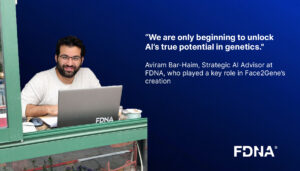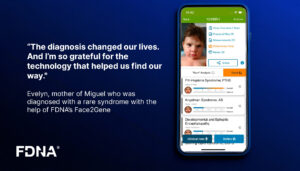December 28, 2016
The News article explores how the Face2Gene app, utilizing machine learning, is revolutionizing the diagnosis of rare diseases. Face2Gene employs advanced facial recognition technology to analyze photos of patients and detect distinctive facial features associated with various genetic disorders. By comparing these features with a comprehensive database, the app provides rapid and accurate diagnostic suggestions. This innovative use of machine learning significantly improves the speed and precision of diagnosing rare diseases, offering invaluable support to healthcare professionals. The article highlights Face2Gene’s potential to transform medical diagnostics, facilitating early intervention and personalized treatment for patients with rare conditions.


